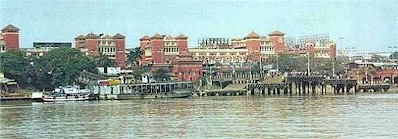 |
| View of Howrah Station from Hooghly River |
Howrah is Kolkata’s twin city. It is situated on the right bank of Hooghly. It is the second largest city of West Bengal and functions as the headquarters of the Howrah district. Although Howrah is technically a separate town, it forms an integral part of Kolkata as the home of much of the city’s industry. Once known as the Sheffield of the Orient, Howrah is famous for its thousands of small units manufacturing industrial products.
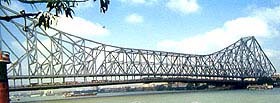 |
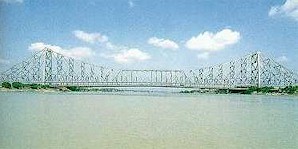 |
| Howrah Bridge (Rabindra Setu) |
 |
| Howrah Station one of the largest railway terminals in the world |
The Howrah municipality was constituted in 1862. Like Kolkata (Calcutta), Howrah has developed in a north south direction. The city has grown along the G T Road and the Andul Road. Howrah serves as a major transportation hub for the Kolkata (Calcutta) metropolitan region. Howrah is an important industrial area and also serves as the railroad terminus of Kolkata.
Two important National Highways - NH-2 and NH-6 link Howrah to the rest of the country. The famous Howrah Bridge also known as the Rabindra Setu, this cantilever bridge is an engineering marvel. It was built in 1943 and is 97 metres (295 ft) high and 705 meters (2,150 ft) long. It connects the city of Howrah to Kolkata’s Burrabazar. From dawn to dusk the Howrah bridge hums with activity which makes it the world’s busiest bridge. A second bridge - the Vidyasagar Setu connects south Howrah to the Kolkata Maidan.
The Howrah Railway station is one of the largest in the world with rail connections to all major Indian cities and towns. Howrah is an important terminus for the suburban railway services of the Eastern and the South Eastern Railway. The massive and extremely busy Howrah Station is of course one of the main landmarks. In 1854, the inaugural train in Eastern India ran from Howrah to Pandua in Hooghly. A major bus terminus is located adjacent to the railway station. A ferry station right in front of the station is a convenient point for taking the launch to various Kolkata ferry ghats.
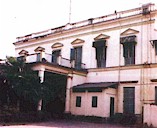 |
| Howrah DM’s bungalow |
The core city is extremely congested and has very few wide roads. Central Howrah has an open area known as the Howrah Maidan. Many of Howrah’s administrative offices are situated around the Howrah Maidan area. There is a small stadium and a swimming complex. A modern auditorium complex - Sarat Sadan has been built near the railway bridge (Bankim Setu) approach. Howrah Maidan is also the site of the country’s biggest weekly textile market known as the Mangla Haat. Howrah is home to many small scale industries. Howrah’s riverbank is lined with shipbuilding and repairing docks. Sibpur, a southern suburb of Howrah, contains light industry and railway workshops.
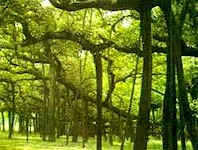 |
| Indian Botanical Gardens |
South Howrah has two major landmarks which are adjacent to each other. One of the main attractions is the Indian Botanical Gardens, in South Howrah. The Botanical Garden was set up in 1786 by Col Robert Kyd. It’s a popular spot for picnics. The banyan tree here has one of the largest canopies in the world. Adjacent to the Botanical Garden is the Bengal Engineering College which is the state’s oldest technical institute and has been declared a deemed university. Established in 1856, is the second oldest and one of the premier engineering institutions in India. It is one of the best colleges of the state and has a beautiful campus. Both the Indian Botanic Garden and the Bengal Engineering College are spread over two of the largest green areas of this metropolis.
 |
| Belur Math |
The Belur Math, the headquarters of the Ramakrishna Mission, is situated in Belur, North Howrah. The complex has several educational institutes and the famous Ramakrishna temple. The main temple in Belur Math incorporates the various architectural styles of the different religions of India. The beautiful settings are in stark contrast to the industrial surroundings of Belur. The mission was founded in 1938 by Swami Vivekananda(1863-1902) and named after his mentor Shri Ramakrishna Paramahansa(1836-1886). The Ramakrishna Mission is famous for itsmissionary work and has branches all over the world. Schools and colleges run by the mission are amongst the best in the country.
